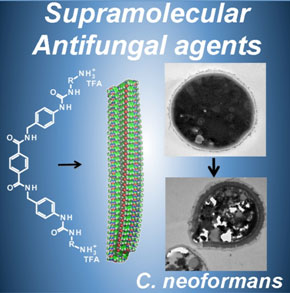
Opportunistic fungal infections are a significant threat for patients with weakened immune systems from conditions such as cancer, organ transplant or HIV/AIDS. The threat for these patients arises when invasive infections caused by Candida, Aspergillus and Cryptococcus neoformans (C. neoformans) fungi strains take the form of potentially lethal blood stream infections, lung infections, and meningitis.
According to the Centers for Disease Control & Prevention (CDC), candidiasis, which is caused by Candida, is the fourth most common fungal blood stream infection among hospitalized patients in the U.S.
Recycled plastic to the rescue
Joint research in Singapore and California has discovered that polyethylene terephthalate (PET), which is often used to make plastic bottles, has superior fungal-killing properties when converted into a non-toxic biocompatible material. Reported in the journal Nature Communications, the newly discovered material was found especially effective at destroying drug-resistant fungi and fungal biofilm. Researchers involved in the project are from Singapore's Institute of Bioengineering and Nanotechnology (IBN) and California's IBM Research - Almaden (IBM).
The researchers transformed PET into small molecule compounds that self-assemble in water into nanofibers. Using electrostatic interaction, the nanofibers were enabled to selectively target fungal cells and penetrate their membrane, killing them in the process.
In a statement to Singapore's Agency for Science Technology and Research, Dr Yi Yan Yang, Group Leader at IBN, noted, "The ability of our molecules to self-assemble into nanofibers is important because unlike discrete molecules, fibers increase the local concentration of cationic charges and compound mass. This facilitates the targeting of the fungal membrane and its subsequent lysis, enabling the fungi to be destroyed at low concentrations. The result is a highly efficient killing strategy that causes minimal damage or toxicity to surrounding healthy cells."
You can read more details about the discovery and research methods here.


